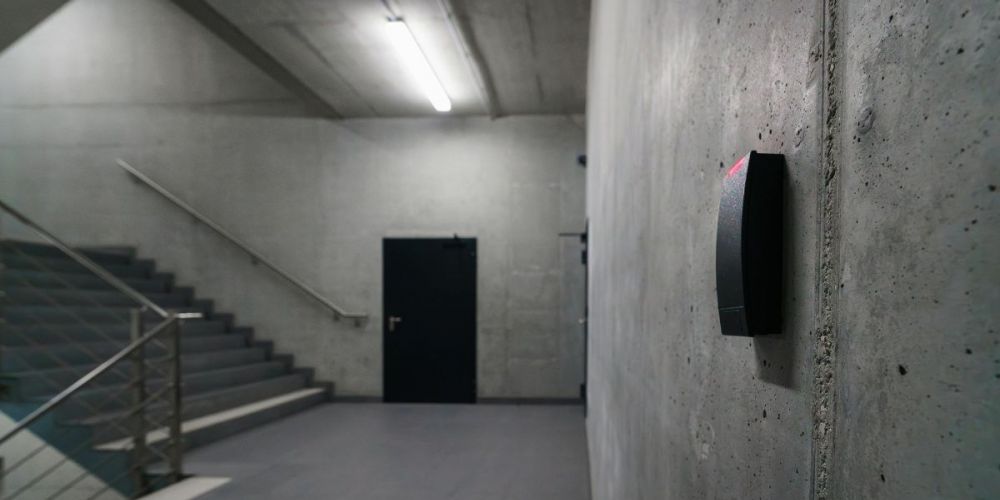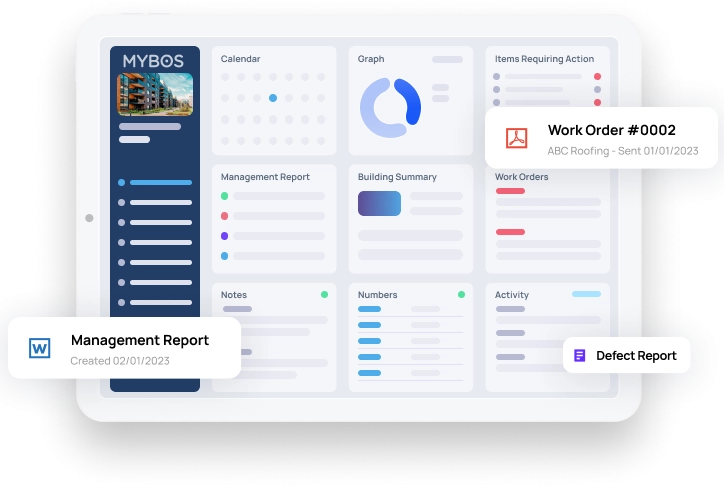
How to Streamline Facility Work Orders for Minimal Downtime
Downtime in facilities management is more than an inconvenience – it can translate to significant operational costs and disruptions. Whether it’s an unexpected HVAC failure, a plumbing issue, or a lighting fault, delays in resolving facility work orders can affect everything from tenant satisfaction to overall productivity.
A 2024 survey by JLL Technologies revealed several important trends shaping facility management this year:
- 55.7% of respondents expect work order volumes to increase in 2024 compared to 2023
- 42.6% reported their facility management teams are understaffed, posing a major challenge in keeping up with growing demands
- 64.8% cited hiring freezes and budget constraints as major obstacles to building fully staffed teams
- More proactive work order management such as faster response times, meeting service level agreements (SLAs), and achieving more first-time fixes was identified as the top software priority for facility managers in 2024
- The most common types of reactive work orders were HVAC, plumbing, janitorial, and electrical issues
- Preventive maintenance is becoming increasingly critical, as shrinking FM budgets require equipment to stay in service longer
- Automating preventive maintenance was the number one expected outcome of adopting asset management software
With demands on facility management teams growing, the pressure to improve speed, efficiency, and transparency in handling building work orders has never been greater.
The good news? A streamlined work order management process can drastically reduce downtime, boost service quality, and keep buildings running at peak performance. Here’s how.
Why Work Orders Are Central to Facility Management
Work orders sit at the heart of effective facility management. They are the formal trigger for inspections, repairs, maintenance, and contractor engagement. Without a robust system, requests can fall through the cracks, priorities can be miscommunicated, and building assets may deteriorate faster than they should.
Moving to a digital first facility work order system ensures that every maintenance issue, whether preventive or reactive, is captured, assigned, and tracked properly from start to finish.
Learn more about the evolution of work order technology in our guide: Technology and Work Orders: The New Paper.
Steps to Streamline Facility Work Orders
1. Implement a Centralised Work Order System
The first and most crucial step is implementing a centralised system that consolidates all maintenance requests into one platform. By managing all tasks, from preventive maintenance to emergency repairs, in a single software environment, facility managers can:
- Easily prioritise urgent jobs
- Track the status of active work orders
- Assign tasks to internal teams or maintenance contractors
- Reduce the risk of duplication or overlooked requests
Deloitte mentions that predictive maintenance and digital work order systems enhance asset-life expectancy and reduce unplanned repairs, leading to improved operational efficiency. Centralised facility maintenance platform not only simplifies operations but also provides transparency for contractors, building managers, and stakeholders.
2. Prioritise Preventive Maintenance Scheduling
Waiting for equipment to break down before taking action is costly. Implementing a preventive maintenance program ensures that assets are regularly serviced before issues escalate.
Effective systems allow you to:
- Automatically schedule recurring maintenance
- Generate work orders for routine inspections
- Identify patterns and predict future failures
For an in-depth look at building a solid maintenance program, visit: Your Streamlined Guide to Preventative Maintenance.
3. Use Mobile Access for Real-Time Updates
Real-time communication is crucial for efficient facility management. JLL highlights that communication is enhanced through the use of portals and mobile apps, allowing facility managers and maintenance staff to access information and report issues while on the go
This functionality leads to:
- Faster response times
- Immediate logging of job status and notes
- On-the-spot photo uploads for before-and-after evidence
By enabling real-time updates, managers can oversee the entire workflow without having to chase down information manually.
4. Set Clear Response and Resolution Targets
Downtime is often prolonged when there are no clearly defined expectations around how quickly issues should be addressed. Setting Service Level Agreements (SLAs) for different types of facility work orders helps ensure accountability and urgency.
For example:
- Emergency work orders: Response within 2 hours, resolution within 24 hours
- High-priority repairs: Response within 4 hours, resolution within 48 hours
- Routine maintenance: Response within 1 business day
Clear benchmarks encourage faster contractor engagement and allow facility managers to better measure performance against KPIs.
5. Automate Notifications and Reminders
Chasing emails and phone calls wastes valuable time. A recent article from CBRE highlights that virtual maintenance solutions enable remote operations centers to triage and resolve non-critical alarms before dispatching on-site technicians. This reduces unnecessary site visits and enhances efficiency.
- A new work order is created
- A job is assigned to a maintenance contractor
- Completion deadlines are approaching
- Approvals or additional information are needed
Automation ensures that no request is forgotten and keeps both managers and contractors aligned without additional manual communication.
6. Integrate Contractor Management
Managing external building contractors is a significant part of streamlining work orders. Good systems allow for contractor profiles, certifications, insurance details, and job histories to be recorded and updated centrally.
Benefits of integrated contractor management include:
- Faster contractor assignment
- Easier compliance tracking
- Improved contractor accountability
- Safer and better-quality service delivery
Proper contractor management also reduces the risk of hiring unqualified vendors, protecting your building and its occupants.
Explore additional strategies in our article: The Most Effective Ways to Improve Operations in Your Facility.
7. Regularly Review and Optimise Processes
Work order management should not be a “set and forget” process. Facility managers should regularly review metrics such as:
- Average response and resolution times
- Number of overdue work orders
- Cost of completed repairs
- Contractor performance ratings
By identifying bottlenecks, updating workflows, and using system data, you can continually refine your work order processes for even greater efficiency.
For a deeper dive into different maintenance strategies, check out: The Three Main Types of Maintenance Strategies.
Final Thoughts: Streamlining Your Facility with Smarter Decisions
In an industry where uptime and efficiency directly impact success, streamlining your facility work order process is critical. Facility managers who embrace smart work order systems today will position themselves ahead of the curve, enjoying lower costs, improved tenant satisfaction, and better asset longevity.
By centralising systems, leveraging automation, setting clear targets, and optimising contractor management, you can ensure that maintenance issues are resolved faster and facility operations stay resilient.
At MYBOS, we understand the importance of seamless work order management. Our intuitive platform is designed to help facility managers track, assign, and complete work orders with minimal downtime and maximum efficiency.
Ready to streamline your work orders and improve your building operations? Book a demo with MYBOS today and discover how we can help you transform your facility management processes.




